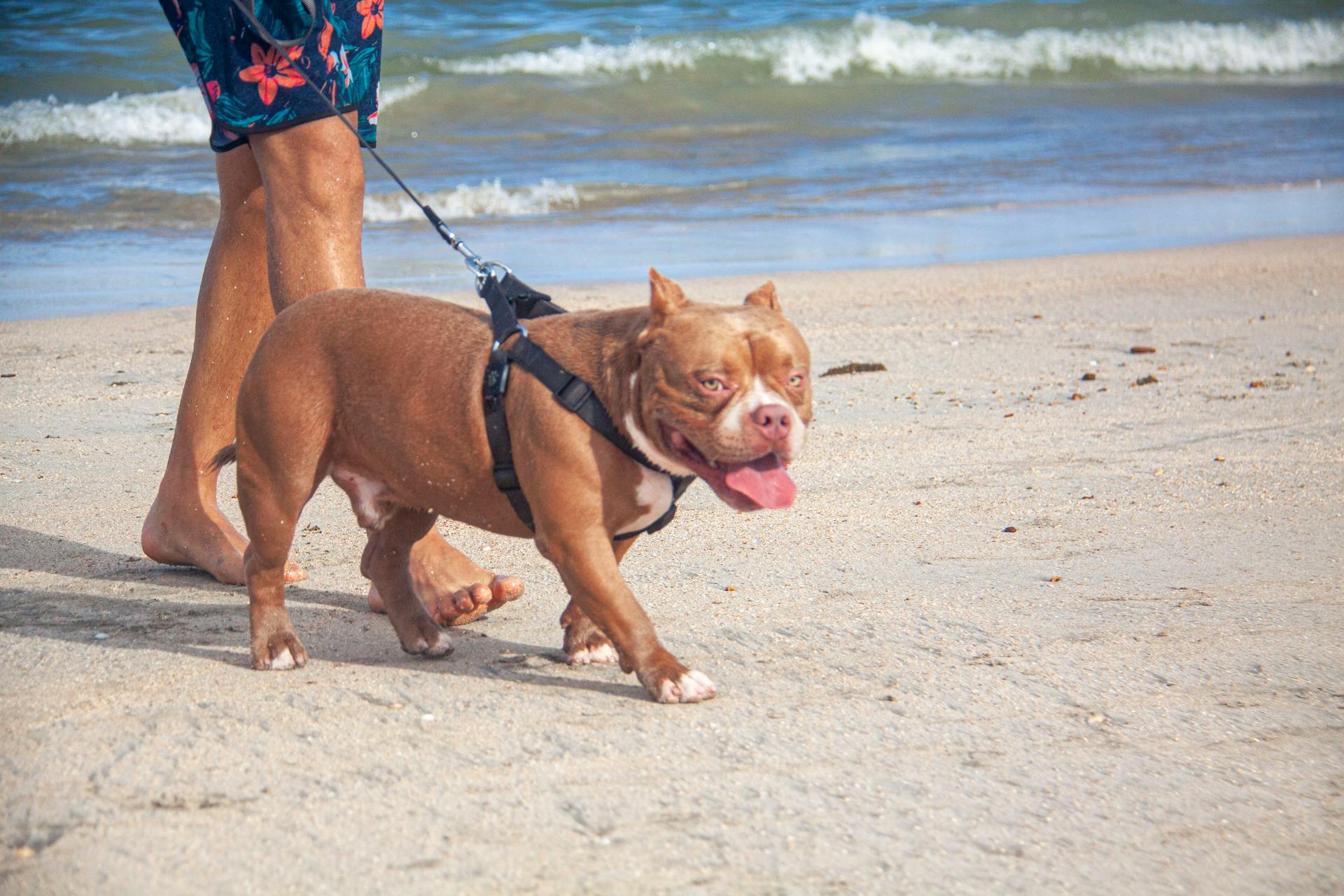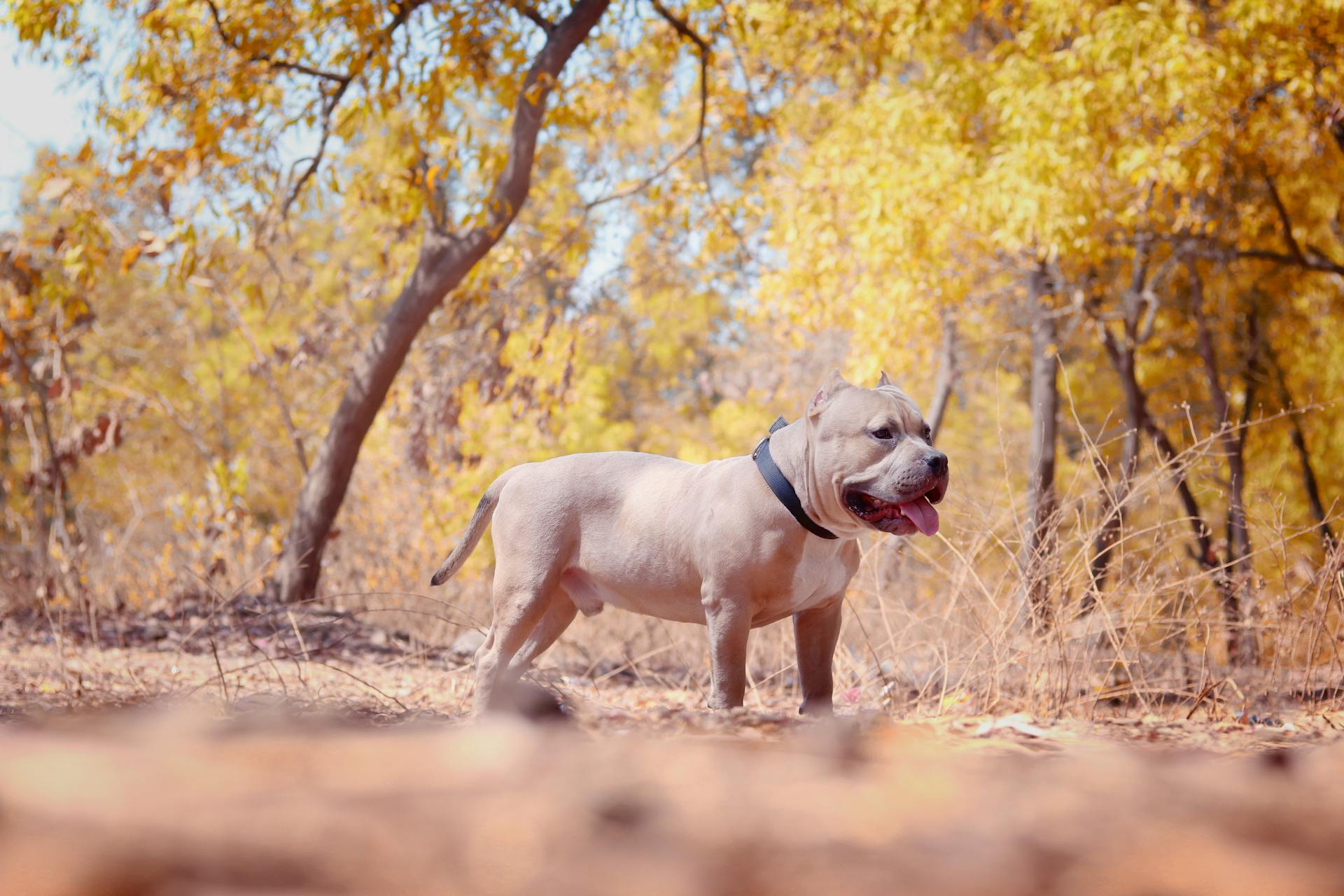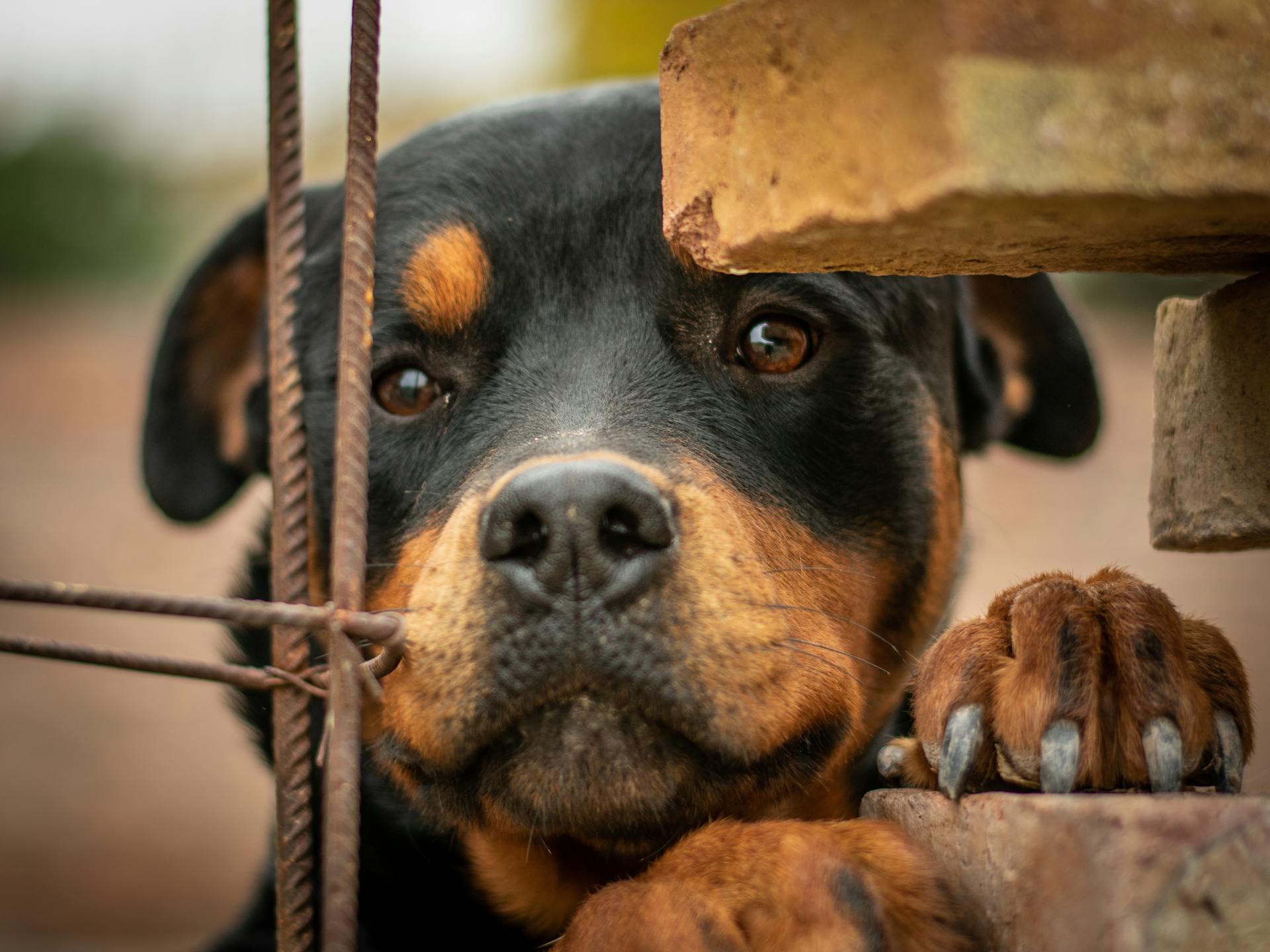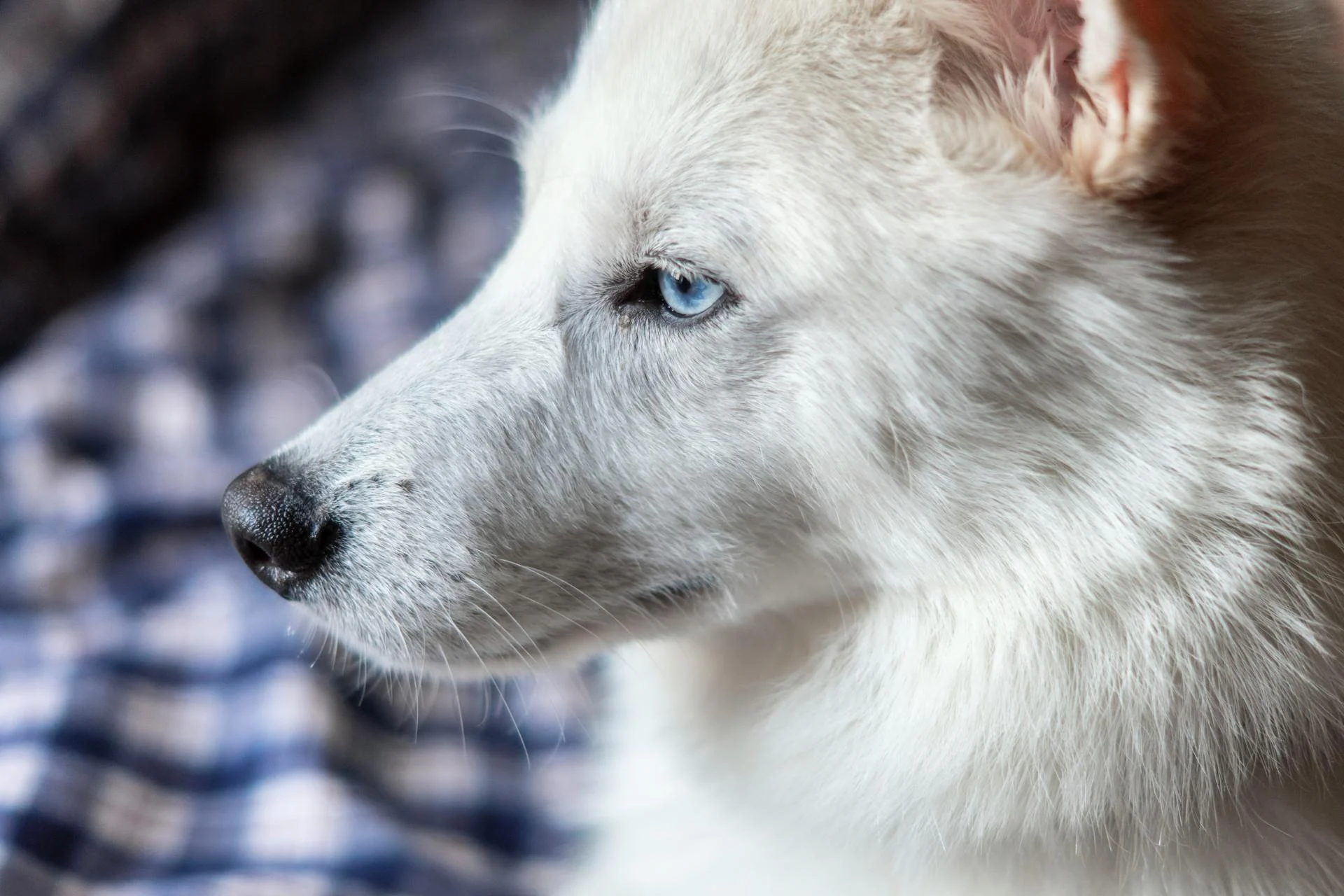
The American Bully and American Bulldog are two popular breeds that often get confused with each other due to their similar names and physical characteristics.
One key difference between the two breeds is their original purpose. The American Bully was bred for companionship and as a family pet, while the American Bulldog was bred for its strength and tenacity to work on farms and ranches.
In terms of physical appearance, the American Bully tends to be more compact and muscular, with a shorter, more compact body. They typically weigh between 70-120 pounds and stand between 17-20 inches tall at the shoulder.
Physical Characteristics
The American Bully and American Bulldog are two distinct breeds with noticeable physical differences. The American Bully tends to be smaller and more compact in size.
One key difference is in their build, with the American Bulldog being larger and more muscular, often used for working on farms. In contrast, the American Bully has a more compact and heavily muscled build, with a focus on creating a visually impressive appearance.
American Bulldogs typically have a square-shaped head with a wide muzzle and strong jaws, while American Bullies have a wider chest and a more pronounced head with a shorter, wider muzzle. The American Bulldog's coat is short and dense, coming in a variety of colors, including brindle, white, and fawn.
Size and Build
The American Bully is a broad, stocky dog with a muscular physique and a shorter stature.
They typically weigh between 70 and 120 pounds and stand between 13 and 21 inches tall at the shoulder.
This breed has a compact, sturdy build making them perfect for families with children.
American Bullies often have a wider chest and a more pronounced head compared to American Bulldogs.
Their muzzle is typically shorter and wider, giving them a distinctive appearance.
The American Bulldog, on the other hand, is a large, imposing dog that is typically larger and taller than the bully breed.
They can weigh between 60 and 120 pounds and stand between 20 and 28 inches tall at the shoulder.
This breed has a powerful, athletic build making them perfect for working on farms or as guard dogs.
Males can weigh between 75 to 120 pounds, while females range from 60 to 100 pounds.
Height-wise, males stand between 22 to 27 inches at the shoulder, while females measure between 20 to 25 inches.
Coat and Colors
The American Bully's coat is short, glossy, and smooth to the touch and comes in various shades of colors and patterns.
Their coats can be black, blue, fawn, or brindle, with some individuals having white markings on their chest, paws, and face.
The American Bulldog has a short coat that's denser than the Bully's, with color variations ranging from white to brindle and fawn that can have black markings.
Their muscular build and striking coat colors give them a distinct look that sets them apart from other breeds.
Facial Features
The American Bully has a broader head, shorter muzzle, sharper cheekbones, and small, downturned eyes. Their ears are usually cropped or left natural, and they have a friendly expression that makes them perfect for families with children.
The American Bulldog has a wider skull, an undershot jaw, and a more pronounced stop, giving it a distinct look that sets it apart from most dog breeds.
Their eyes are usually almond-shaped and in various shades of brown. The American Bulldog has a determined expression that makes them perfect for working on farms or as guard dogs.
Dogs with Heaviest Shedding
The Afghan Hound sheds heavily due to its thick, fine coat. It requires regular grooming to prevent matting.
Their coat needs to be brushed several times a week, and they need to be bathed regularly as well.
Some owners of Afghan Hounds have reported needing to brush their dog's coat daily to prevent excessive shedding.
Regular grooming is essential to prevent matting and tangling, which can be painful for the dog.
The Afghan Hound's heavy shedding can be a challenge for some owners, but with regular grooming, it can be managed.
Their coat can also be prone to tangling, which can cause discomfort for the dog.
Temperament and Behavior
Temperament and behavior are crucial aspects of any dog breed, and American Bulldogs and American Bullies diverge significantly in this area. American Bulldogs are known for their loyalty and protectiveness, making them excellent guard dogs.
They require consistent and firm leadership, and thrive in homes where they are given structure and clear boundaries. Early socialization and training are essential to ensure they are well-rounded family pets.
American Bulldogs have a high prey drive and a natural instinct to protect their territory, which can make them wary of strangers. However, with proper training and socialization, they can be friendly and sociable with both humans and other animals.
In contrast, American Bullies are often described as eager to please and good-natured, with a friendly and sociable disposition that makes them excellent family pets. They are highly trainable and respond well to positive reinforcement methods.
American Bullies are generally not aggressive towards strangers, and are typically friendly and approachable, making them poor guard dogs. They thrive in homes where they receive plenty of social interaction and are treated as part of the family.
Their loyalty and affectionate nature make them ideal companions, and they are quick learners that are easy to train.
Training and Care
Both American Bullies and American Bulldogs require regular physical activity and mental stimulation, with American Bulldogs needing more exercise due to their farm work history. They respond well to consistent training and enjoy having tasks to accomplish.
Consistency is key when training either breed, and positive reinforcement methods such as praise, treats, and playtime can be very effective. Daily exercise is crucial to prevent boredom and keep them healthy and happy.
These dogs need a strong leader that is consistent and firm in their training, and they are not well suited to first-time pet owners. They are highly intelligent and can pick up training easily, particularly the American Bully, who is known to be a quick learner.
Training Needs
Both American Bulldogs and American Bullies are stubborn dogs that require consistent training and socialization from a young age.
They need a strong leader who is firm in their training, and they're not well suited to first-time pet owners.
These dogs are highly intelligent and can pick up training easily, particularly the American Bully, who is known to be a quick learner.
The American Bulldog is still intelligent but also quite independent, so he has to want to listen and obey his owner.
They're often trained as service animals, and both breeds don't take a lot of effort to look after when it comes to maintenance.
Regular physical activity and mental stimulation are crucial for American Bulldogs, who respond well to consistent training and tasks to accomplish.
The American Bully, on the other hand, has a lower energy level and is more adaptable to different living situations, making them suitable for apartment living as well.
Training Techniques
Consistency is key when training American Bulldogs and American Bullies. They respond well to a firm, consistent training approach focusing on positive reinforcement and leadership.
Establishing yourself as the pack leader is essential for both breeds. This means being clear and assertive in your commands.
Daily exercise is crucial to prevent boredom and keep them healthy and happy. American Bulldogs and American Bullies require at least daily exercise to stay physically and mentally fit.
Positive reinforcement methods such as praise, treats, and playtime can be very effective for both breeds. This means rewarding good behavior rather than punishing bad behavior.
Their natural athletic abilities make them ideal for agility and weight pulling competitions. American Bulldogs, in particular, respond well to obedience and socialization training.
Grooming
Both breeds are fairly low-maintenance, with short, bristly coats that don't require a lot of brushing or bathing.
They tend to do well in the summer but should be kept indoors in the winter.
American Bulldogs need a bit more grooming, as the skin folds on their face need to be wiped down every week or so to keep bacteria from forming, which can lead to infection.
Keep those skin folds clean, and you'll avoid any potential health issues.
Health and Lifespan
The American Bully and American Bulldog breeds have varying lifespans. The American Bully lives on average between 8 and 12 years, while the American Bulldog enjoys a longer lifespan of between 14 and 16 years.
Both breeds are susceptible to hip and joint issues, such as hip dysplasia, which can lead to arthritis and mobility problems. Hip dysplasia occurs when the hip joint doesn't develop properly.
Health problems can also include heart valve disease, which can cause heart failure if left untreated, and skin allergies, which can cause itching, rashes, and discomfort. Eye problems, such as cherry eye, can also be a concern for American Bulldogs.
Health and Lifespan
The American Bully breed is still relatively new, so it's difficult to pinpoint specific health issues. Some American Bullies live long, issue-free lives, while others struggle with various health problems.
Hip dysplasia is a common issue in both American Bullies and American Bulldogs, which can lead to discomfort, pain, and arthritis. This condition occurs when the hip joint doesn't develop properly.
Heart valve disease is another health issue that can affect American Bullies, causing heart failure if left untreated. Skin allergies are also a common problem for this breed, leading to itching, rashes, and discomfort.
Elbow dysplasia is another joint issue that can occur in American Bulldogs, causing lameness. Eye problems, such as cherry eye, can also affect this breed, where the gland in the eye that produces tears becomes inflamed and protrudes from the eye.
Both breeds are prone to obesity due to their love of food, so it's essential to monitor their diet and ensure they get regular exercise. Obesity can lead to various health problems, including joint issues.
The average lifespan of an American Bully is between 8 and 12 years, while American Bulldogs live between 14 and 16 years. These breeds are susceptible to developing hip and joint issues during these years.
Bite Forces
The American Bulldog and the extra large American Bully have an identical bite force of 305 PSI, which is slightly more than the American Pitbull Terrier.
This impressive bite force is likely due to the breed's muscular build and powerful jaw.
The smaller American Bully variants are likely to have a bite force of between 200 and 300 PSI, which is still significant but not quite as strong as the larger variants.
History and Origins
The American Bully and American Bulldog have distinct histories and origins. The American Bulldog is a considerably older breed, descending from the now-extinct Old English Bulldog, which also gave rise to the modern English Bulldog.
Immigrants from England brought the Old English Bulldog to America in the 17th century, where it was bred for its strength and power to hunt feral hogs and guard livestock. The American Bully, on the other hand, is a relatively new breed developed in the 1980s in the United States.
It was created as a more family-friendly version of the American Pitbull Terrier by crossing American Staffordshire Terriers, American Pit Bull Terriers, American Bulldogs, English Bulldogs, Olde English Bulldogges, Staffordshire Bull Terriers, and even French Bulldogs. The American Bulldog has a more extended history, first bred in the United States in the 18th century.
The American Bulldog was selectively bred for farm work, hunting, guard duty, and as a family pet, showcasing its versatility and strength. The American Bully, in contrast, was developed to be a companion dog with a friendly and loyal disposition.
Both breeds are strong and powerful, with muscular builds, and feature a boxy body with a square head, broad chest, short coat, and strong jawline. The American Bulldog was once at risk of extinction but has since made a comeback as a working dog and protector of the home and farm.
Frequently Asked Questions
Is American Bully just a Pitbull?
American Bully is a distinct breed from Pitbull, developed in the 1990s as a separate type of dog. While they share some similarities, they have unique characteristics and histories.
What two dogs make an American Bully?
The American Bully was developed by crossing the American Pit Bull Terrier and the American Staffordshire Terrier. These breeds were combined to create the unique characteristics of the American Bully.
Sources
- https://medium.com/@abukogeorge2020/comparative-analysis-is-american-bully-the-same-as-american-bulldog-e8bd2b7af6ae
- https://www.hepper.com/american-bully-vs-american-bulldog/
- https://www.thepetconomist.com/health-diet/american-bulldog-vs-american-bully-which-is-the-best-breed/
- https://www.k9web.com/breeds/american-bully-vs-american-bulldog/
- https://blog.tryfi.com/are-american-bulldogs-and-american-bullies-the-same/
Featured Images: pexels.com


